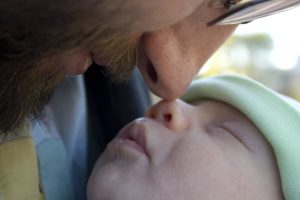Scientists have been searching far and wide for solutions that could help avert an impending armageddon caused by antibiotic-resistant bacteria. But new research shows at least one possible cure may lie in the microbes that live right in our own bodies. Specifically, it could be right up our own nose.
Alexander Zipperer and Martin Konnerth from the University of Tübingen discovered a chemical called lugdunin produced by a bacterium that resides in our nostrils. The compound kills Staphylococcus aureus, a common and harmless microbe that also resides inside the nose, as well as its deadly variant called MRSA. The full results of the work appear in the July 28 issue of Nature.
Researchers are still not sure how exactly lugdunin works. But what’s groundbreaking is that they found a potential new antibiotic compound in our own body’s microbiome.
“We believe that we’ve come up with a new concept,” microbiologist and coauthor Andreas Peschel of the University of Tübingen said in a press conference. “It was totally unexpected to find a human-associated bacteria that produces a real antibiotic.”
The discovery got its start when Peschel and bacteriologist Bernhard Krismer asked why about a third of people carry S. aureus in their nose when the bacteria had the potential to cause life-threatening disease. For example, it can cause sepsis when the bacteria gets into an open wound.
Peschel and Krismer took a closer look at the ecology of our nasal mucus – aka our snot – to see what was going on. What they found was that the nose is a wasteland for microbes.
But the lack of resources apparently generates fierce competition. And one bacterium, S. lugdunensis, was very efficient at preventing S. aureus from growing. It produced the key antibiotic lugdunin which the team isolated and reproduced in a laboratory. When they applied the compound to the skin of mice infected with S. aureus, it reduced or even eradicated the infection.
Even more promising, the researchers found S. aureus never developed a resistance to lugdunin even after exposing the bacteria to small amounts of the compound for multiple generations over 30 days.
Of course, years of rigorous testing will need to be done before we know whether scientists have a viable antibiotic drug on their hands. But with antibiotic-resistant bacteria estimated to kill 10 million people every year by 2050, this is a very welcome first step at finding new drugs in a novel location.
![https://www.flickr.com/photos/quinnanya/11557542143/in/photolist-iBiqBZ-a5Tacg-aapXcR-6ReHbi-o8aZ1w-EUgYN-7E1By-6CVMCa-9efojE-57YowA-6u53nu-5DoreC-4o1shN-hcm18Y-eXFcso-5EVwSr-7SWJuX-fYxuXW-tUTP3-hcqJxB-bDg4Zi-dLS13n-bAwezm-3522zm-aFC8Ag-LnAzd-bzHMCp-atmpzL-cVGhxo-rPae7N-awuoCM-mYmtn-atmpCC-wArSyo-823odJ-o9MKJn-g3x1j7-bzHyNe-qrFuXw-8jaR3Z-8d5Nbb-31sMLS-HfPvW-nbfc3W-5apGoq-5u3zah-9ecg9x-jykh-4mGJ49-6xuJ3]](http://fanvive.com/wp-content/uploads/2016/08/pill_map-300x169.png)











